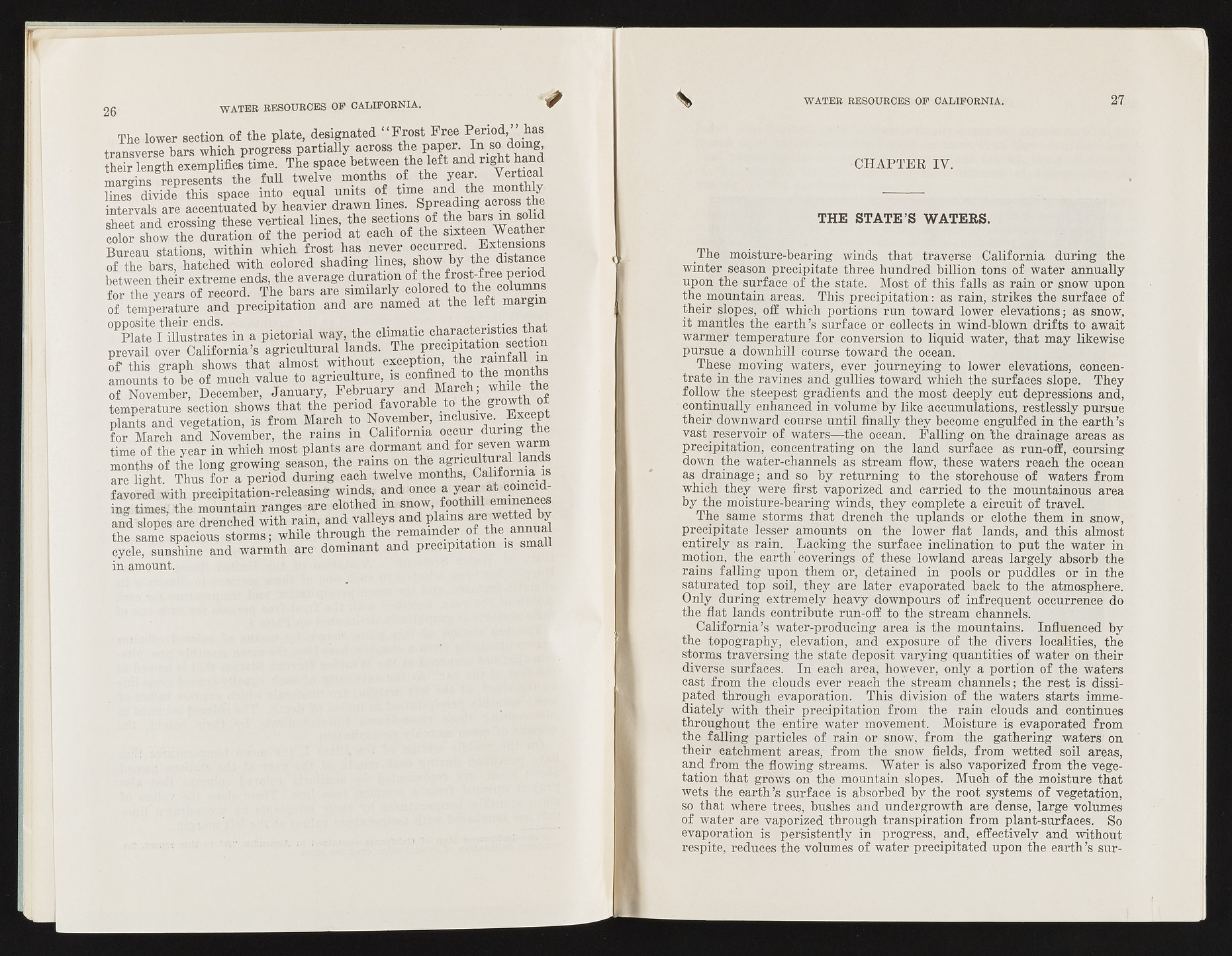Copyright & Fair-use Agreement
UNLV Special Collections provides copies of materials to facilitate private study, scholarship, or research. Material not in the public domain may be used according to fair use of copyrighted materials as defined by copyright law. Please cite us.
Please note that UNLV may not own the copyright to these materials and cannot provide permission to publish or distribute materials when UNLV is not the copyright holder. The user is solely responsible for determining the copyright status of materials and obtaining permission to use material from the copyright holder and for determining whether any permissions relating to any other rights are necessary for the intended use, and for obtaining all required permissions beyond that allowed by fair use.
Read more about our reproduction and use policy.
I agree.Information
Digital ID
Permalink
Details
Member of
More Info
Rights
Digital Provenance
Publisher
Transcription
26 WATER RESOURCES OP CALIFORNIA. W The lower section of the plate, designated “ Frost Free Period,’ ’ has transverse bars which progress partially across the paper. In so doing, their length exemplifies time. The space between the left and right hand margins represents the full twelve months of the year. Vertical lines divide this space into equal units of time and the month y intervals are accentuated by heavier drawn lines. sheet and crossing these vertical lines, the sections of the bars m solid olor s?ow the deration of the period at each of the ^ e e n Wea her Bureau stations, within which frost has never occurred, p e n s io n s of the bars, hatched with colored shading lines, show by the distance between their extreme ends, the average duration ofthefrost-freeperiod for the years of record. The bars are similarly colored to gffij l j M of temperature and precipitation and are named at the left margin °Ppiate I illustrates in a pictorial way, the climatic prevail over California’s agricultural lands. j j m B j j j a M M l i o f this graph shows that almost without exception, the ?amfali i amounts to be of much value to agriculture, is confined to ^ months of November, December, January, February and March; while the temperature section shows that the period favorable to the growth of plants and vegetation, is from March to November, j B — a M for March and November, the rams m California occur ^ r in g the time of the year in which most plants are dormant and for seven warm months of the long growing season, the rams on the agricultural land are light. Thus for a period during each twelve months, California is favored. With precipitation-releasing winds and once ® ing times, the mountain ranges are clothed m snow, ,. ?> ?. and slopes are drenched with rain, and valleys and p ams , annual the same spacious storms; while through the remainder cycle;,, sunshine and warmth are dominant and precipitation is small in amount, WATER * RESOURCES OP CALIFORNIA. 27 CHAPTER IV. THE STATE’S WATERS. The moisture-bearing winds that traverse California during the winter season precipitate three hundred billion tons of water annually upon the surface o f the state. Most of this falls as rain or snow upon the mountain areas. This precipitation: as rain, strikes the surface of their slopes, off which portions run toward lower elevations; as snow, it mantles the earth’s surface or collects in wind-blown drifts to await warmer temperature for conversion to liquid water, that may likewise pursue a downhill course toward the ocean. These moving waters, ever journeying to lower elevations, concentrate in the ravines and gullies toward which the surfaces slope. They follow the steepest gradients and the most deeply cut depressions and, continually enhanced in volume by like accumulations, restlessly pursue their- downward course until finally they become engulfed in the earth’s vast reservoir of waters— the ocean. Falling on ‘the drainage areas as precipitation, concentrating on the land surface as run-off, coursing down the water-channels as stream flow, these waters reach the ocean as drainage; and so by returning to the storehouse o f waters from which they were first vaporized and carried to the mountainous area by the moisture-bearing winds, they complete a circuit of travel. The same storms that drench the uplands or clothe them in snow, precipitate lesser amounts on the lower flat lands, and this almost entirely as rain. Lacking the surface inclination to put the water in motion, the earth'coverings of these lowland areas largely absorb the rains falling upon them or, detained in pools or puddles or in the saturated top soil, they are later evaporated back to the atmosphere: Only during extremely heavy downpours of infrequent occurrence do the flat lands contribute run-off to the stream channels. California’s water-producing area is the mountains. Influenced by the topography, elevation, and exposure of the divers localities, the storms traversing the state deposit varying quantities o f water on their diverse surfaces. In each area, however, only a portion of the waters cast from the clouds ever reach the stream channels; the rest is dissipated through evaporation. This division of the waters starts immediately with their precipitation from the rain clouds and continues throughout the entire water movement. Moisture is evaporated from the falling particles of rain or snow, from the gathering waters on their eatchment areas, from the snow fields, from wetted soil areas, and from the flowing streams. Water is also vaporized from the vegetation that grows on the mountain slopes. Much of the moisture that wets the earth’s surface is absorbed by the root systems of vegetation, so that where trees, bushes and undergrowth are dense, large volumes of water are vaporized through transpiration from plant-surfaces. So evaporation is persistently in progress, and, effectively and without respite, reduces the volumes of water precipitated upon the earth’s sur-

